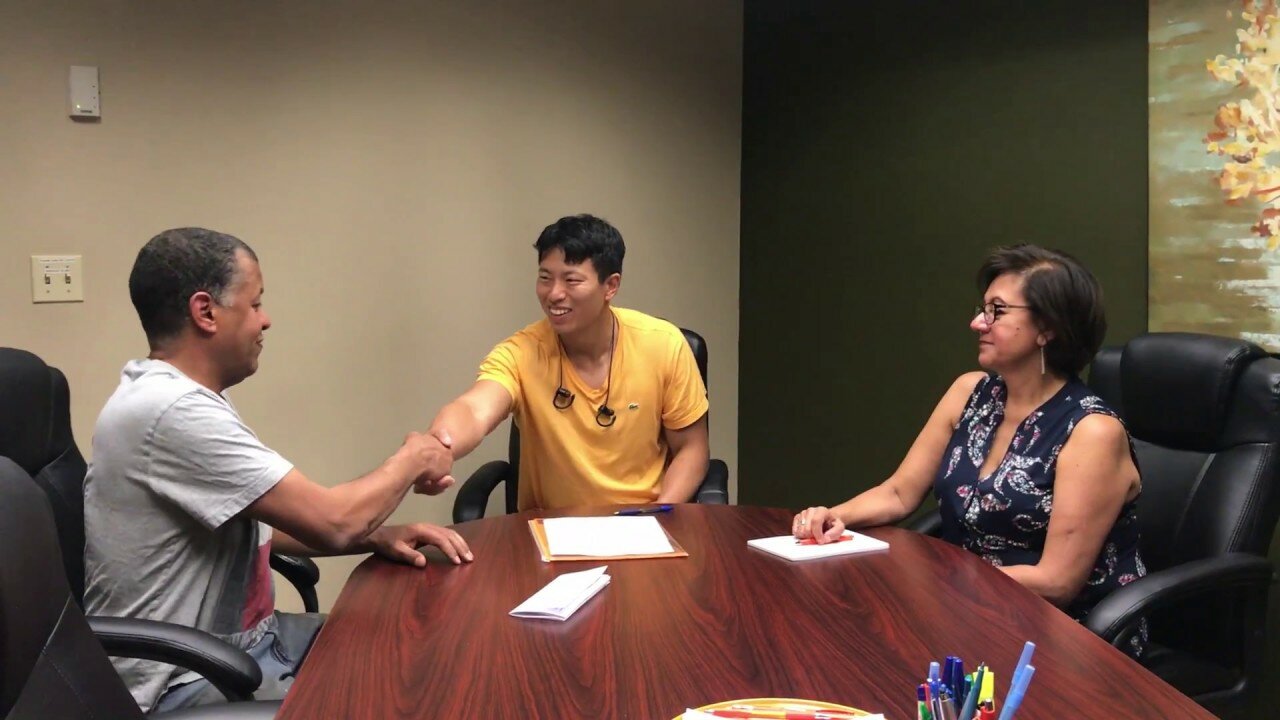
When becoming educated on how to flip houses without money, the first thing we should tell you is that it’s possible. Many investors can give you the money to make your first deal when flipping a home. Yes, you heard us correctly.
Many investors will willingly provide you with the funds you need if you can prove trustworthy and deserving. Below, we’ll discuss how to flip houses without money and 9 ways you should know about.
How to Flip Houses With No Money in 9 Ways
Below are 9 ways you can flip houses with no money.
1. Option to Buy
The first way we recommend flipping a home with money is the option-to-buy approach. Sometimes referred to as a lease option, investors will agree to purchase a home once its leasing is finished. When renters occupy a space, and they agree to purchase a home, this is considered the option to buy.
Once the renters sign the contract, the home purchasing price is determined, and in some circumstances, rental payments can be used towards the final purchase price. If you’ve been wondering how to flip a house with no money, this is a great option, as an option-to-buy home doesn’t require any payment upfront.
2. Seller Financing
Another approach we recommend for those researching how to flip a house with no money is seller financing. Once finding a home to flip, investors can look for a property advertising seller financing rather than using traditional lenders. Investors can work directly with past property owners when using seller financing.
This is one of the best options to flip a house with no money because there’s more flexibility in terms of negotiations. With seller financing, there’s potential for smaller down payments, better payment schedules, and more accessible approval methods. To obtain a home using seller financing, it’s essential that you know what to expect and to be confident during the process.
When using the seller financing option, we should let you know that you’ll be asked about your current income if you’re employed, and if you have good or bad credit. However, it’s essential to remember when using seller financing, that you aren’t working with traditional lenders. Additionally, not every home allows seller financing, so be mindful when making your next move.
3. Crowdfunding
A third way to flip a house with no money is through crowdfunding. Crowdfunding is a strategy that uses multiple investors who can contribute to various portions of your loan. We recommend researching various websites that connect individuals who flip homes to crowdfunders to keep the process moving forward.
Crowdfunding is an excellent option for those who cannot obtain a mortgage through other lending companies.
4. Private Lenders

Private lenders are an excellent way to obtain funding when flipping a home. Private lenders are considered banks without the need to jump through hoops in the ways traditional lenders require. These individuals have more funds to invest and are not associated with government-supported financial companies.
Private lenders can set their requirements, with many having fees around six to twelve percent. While you can expect a higher rate with a private lender than traditional lenders, the best part is that they have the money on hand and can provide it in a few hours. If the higher rate means you can receive the funds sooner, it may be well worth it.
In comparison, when using a traditional bank, it can take anywhere up to forty-five days to close a deal. If using a private lender, you may be required to provide an insurance policy or trust deed on your home.
5. Wholesaling
Our favorite way to flip a house with no money is by wholesaling. Wholesaling homes will allow investors to make a ridiculous amount of money in only a short amount of time, making it ideal for flipping homes. The first part of the process involves finding a home for sale, getting the home under contract, and then giving the contract to a new buyer.
Using the wholesaling approach doesn’t involve purchasing homes, which provides individuals with an excellent opportunity to put their foot into real estate without needing to finance. One essential note to remember when wholesaling is that you’ll need to do plenty of research to find homes.
You should heavily monitor the market, keep in touch with potential buyers, and learn how to negotiate contracts. Additionally, wholesaling can provide you with essential skills when flipping homes.
6. Home Equity
If you didn’t already know, we’re here to tell you that you can use home equity from one property to flip another. If you’re a homeowner who has current value in their home, there are a few options you can consider to get cash. One of the ways to obtain some money through home equity is to refinance.
To use this approach, you’ll need to rework your mortgage and pocket the difference between your two loans, meaning you can use it as a down payment when flipping a home. There’s also such a thing as a HELOC (Home Equity Line of Credit), which is similar to a credit card and allows investors to borrow funds and add payments every month.
The best part about using a HELOC is that you can often deduct it from your taxes. It’s essential to remember that you must have a certain amount of equity in your home before you can use this option. Generally, the more equity you have in your home, the better your odds of getting approved.
Additionally, it’s vital to see how much equity you’ll have remaining in your home once you borrow, as many homeowners choose to maintain at least twenty percent.
7. Live-In Flip
If you’re wondering how to flip houses with no money, you can purchase a home and renovate the home while you live there. The live-in flip option opens up many financial opportunities with lower down payments. It’s vital to remember that many programs will require the individual to live in the home for at least one year.
Additionally, with the operations of a rental property, there may be some restrictions to consider. It’s essential to conduct enough research and obtain enough clarity from the lender. When correctly executed, the live-in flip approach is an excellent way to begin flipping houses.
8. Hard Money Lenders
Hard money lenders are companies that offer individuals short-term loans. Unlike private lenders, they are connected to companies that specialize in lending funds. Hard money lenders will provide individuals with shorter terms to distance themselves from traditional lenders.
Traditional lenders may offer loans from fifteen to thirty years, whereas hard money lenders offer six-month to two-year options. Not only are these lenders more flexible with their guidelines, but they also require higher rates than a private lender. However, each hard money lender isn’t universal, and some have different guidelines.
It’s also essential to remember that many of these lenders will only offer loans at a percentage of the home purchase price, typically around seventy percent. With this percentage, many investors will look at different options so they don’t need to dish out money from their pockets.
9. Partner With Investors
While hard money and private lenders are a great choice to flip a house without money, partnering with investors is equally beneficial. Working with someone who has already flipped a home can be an excellent move, and sometimes, they can provide you with the funding. Using a partner with funds is just as good as usually a hard money or private lender.
Instead of working alone to take your next deal, consider using a partner to invest with, as long as you know they’ll provide enough value in flipping the home. It’s essential to remember that if you aren’t providing enough funds for the project, you should be able to pitch in elsewhere. Whatever way you choose to contribute, the contributions should be equal to gain trust with your partnering investor.
The Bottom Line
Many investors lack the proper knowledge of how many funding opportunities they can take advantage of when flipping a home. Many are convinced they must use their funds to purchase a home, but this is not the case.
When flipping houses with no money, the essential detail to remember is that your best option is to use a private or hard money lender or a partnering investor. These three options are the best when flipping a home with no money.
How to Flip Houses With No Money: FAQ
1. How much money do I need to start flipping houses?
It’s possible to start flipping houses without money using various lenders or wholesaling. However, in some cases, you should allocate at least $15,000 when flipping a home.
2. What is the easiest way to flip a house?
The easiest way to flip a house is to research the market, communicate with experienced flippers, organize your finances, search for and purchase properties, construct a timeline, and choose your next home to flip.
3. What is the seventy percent rule when flipping houses?
The seventy percent rule says you shouldn’t buy a fixer-upper for more than seventy percent of the home’s ARV (after repair value).

